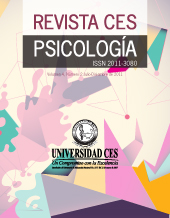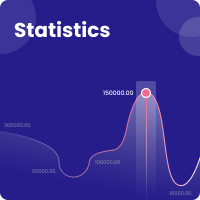The development mechanisms of selective attention in child population
DOI:
https://doi.org/10.21615/cesp.12.3.8Keywords:
Selective Attention, Cognitive Inhibition, nhibitory Control, Processing Speed, ChildrenAbstract
Selective attention allows directs attention to relevant objects or stimuli, while avoiding distraction from those that are irrelevant. The literature indicates that performance in CVS tasks improves markedly with age. However, age-related differences are not met neither for every number of distractor conditions nor for all age groups. In addition, the contribution of inhibitory control and processing speed to this progressive improvement has not yet been explored. For this reason, and due to the scarcity of studies using CVS paradigm to evaluate selective attention in children, the present study aimed to analyze the relative contribution of processing speed and inhibition to performance during this evolutionary period in a selective attention and CVS task. To do this, a CVS and a simple response speed task were administered to 295 children aged 6-13 years old. Results offered two conclusions: first, selective attention improves during childhood; second, there is no general and exclusive mechanism capable of explaining these differences during this period. Thus, both processing speed and inhibitory control contribute to development of selective attention, and they seem to be more complementary mechanisms than excluding ones.
Downloads
References
Belmont, J. (1996). Commentary: The “inverted-U” shapedness of mental development. Journal of Russian & East European Psychology, 34(6), 12–15. doi: https://doi.org/10.2753/RPO1061-0405340612
Canfield, R. L., Smith, E. G., Brezsnyak, M. P., & Snow, K. L. (1997). Information processing through the first year of life: A longitudinal study using the visual expectation paradigm. Monographs of the Society for Research in Child Development, 62(2), 1-145. doi: https://doi.org/10.2307/1166196
Christ, S. E., White, D. A., Mandernach, T. B., & Keys, B. A. (2001). Inhibitory control across the life-span. Developmental Neuropsychology, 20(3), 653-669. doi: https://doi.org/10.1207/S15326942DN2 003_7
Crone, E. A., Jennings, J. R., & van der Molen, M. W. (2003). Sensitivity to interference and response contingencies in attention deficit/hyperactivity disorder. Journal of Child Psychology and Psychiatry, 44(2), 214–226. doi: https://doi.org/10.1111/1469-7610.00115
Dempster, F. N. (1992). The rise and fall of the inhibitory mechanism: Toward a unified theory of cognitive development and aging. Developmental Review, 12(1), 45–75. doi: https://doi.org/10.1016/0273-2297(92)90003-K
Diamond, A. (1990). The developmental and neural bases of memory functions as indexed by the AB and delayed response tasks in human infants and infant monkeys. Annals of the New York Academy of Sciences, 608(1), 267–317. doi: https://doi.org/10.1111/j.1749-6632.1990.tb48900.x
Gerstadt, C. L., Hong, Y. J., & Diamond, A. (1994). The relationship between cognition and action: Performance of children 3 1⁄2-7 years old on a Stroop-like day–night test. Cognition, 53(2), 129–153. doi: https://doi.org/10.1016/0010-0277(94)90068-X
Harnishfeger, K. K. (1995). The development of cognitive inhibition: Theories, definitions, and research evidence. En F. N. Dempster (Ed.), Interference and inhibition in cognition (pp. 175–204). Londres, Reino Unido: Academic Press. doi: https://doi.org/10.1016/B978-012208930-5/50007-6
Hasher L., & Zacks R. (1988). Working memory, comprehension, and aging: A review and a new view. En G. H. Bower (Ed.), The psychology of learning and motivation: Advances in research and theory. Vol. 22 (pp. 193-225). New York, EE.UU.: Academic Press. doi: https://doi.org/10.1016/S0079-7421(08)60041-9
Hasher, L., Lustig, C., & Zacks, R. (2007). Inhibitory mechanisms and the control of attention. En A. Conway, C. Jarrold, M. Kane, A. Miyake, & J. Towse (Eds.), Variation in working memory (pp. 227-249). New York, EE. UU.: Oxford University Press.
Hernández Sampieri, R., Fernández Collado, C., & Baptista Lucio, P. (2015). Metodología de la investigación. (6ta ed.) México DF, México: Mc Graw Hill.
Hommel, B., Li, K. Z. H., & Li, S.-C. (2004). Visual search across the life span. Developmental Psychology, 40(4), 545–558. doi: https://doi.org/10.1037/0012-1649.40.4.545
Introzzi, I., & Canet-Juric, L. (2012). TAC: Tareas de Autorregulación Cognitiva [Software y manual de usuario]. (Solicitud de depósito en custodia de obra inédita en Dirección Nacional del derecho de autor. Expediente N° 5068904).
Introzzi, I., Zamora, E., Aydmune, Y., Canet-Juric, L., & López, S. (2017). El rol de la inhibición en la Teoría de Integración de las Características. Cuadernos de Neuropsicología, 11(3), 135-150. Disponible en: https://www.cnps.cl/index.php/cnps/article/view/304
Introzzi, I., Richard`s M., Garcia Coni, A., Aydmune, Y., Comesaña, A., Canet Juric, L., & Galli, J. I. (2016). El desarrollo de la inhibición perceptual en niños y adolescentes a través del paradigma de búsqueda visual conjunta. Revista Argentina de Neuropsicología, 29, 1-15. Disponible en: http://www.revneuropsi.com.ar/numeros-anteriores
Jiménez, J. E., Hernández, S., García, E., Díaz, A., Rodríguez, C., & Martín, R. (2012). Test de atención D2: Datos normativos y desarrollo evolutivo de la atención en educación primaria. European Journal of Education and Psychology, 5(1), 93-106. Disponible en: https://www.redalyc.org/articulo.oa?id=129324775008
Kail, R. (1991). Developmental change in speed of processing during childhood and adolescence. Psychological Bulletin, 109(3), 490–501. doi: https://doi.org/10.1037/0033-2909.109.3.490
Kail, R. (1995). Processing speed, memory and cognition. En F.V. Weinert & W. Schneider (Eds.), Memory performances and competencies: Issues in growth and development (pp. 71-88). Mahwah, NJ, EE.UU.: Erlbaum.
Kail, R. (1997). Phonological skill and articulation time independently contribute to the development of memory span. Journal of Experimental Psychology, 67(1), 57-68. doi: https://doi.org/10.1006/jecp.1997.2393
Kail, R., & Bisanz, J. (1992). The information-processing perspective on cognitive development in childhood and adolescence. En R. J. Sternberg & C. A. Berg (Eds.), Intellectual development (pp. 229-260). Cambridge, Reino Unido: Cambridge University Press.
Kail, R., & Salthouse, T. A. (1994). Processing speed as a mental capacity. Acta Psychologica, 86(2-3), 199–225. doi: https://doi.org/10.1016/0001-6918(94)90003-5
Klenberg, L., Korkman, M., & Lahti-Nuuttila, P. (2001). Differential development of attention and executive functions in 3-to 12-year-old Finnish children. Developmental Neuropsychology, 20(1), 407-428. doi: https://doi.org/10.1207/S15326942DN2001_6
Lobaugh, N. J., Cole, S., & Rovet, J. F. (1998). Visual search for features and conjunctions in development. Canadian Journal of Experimental Psychology, 52(4), 201–211. doi: https://doi.org/10.1037/h0087293
Lustig, C., Hasher, L., & Tonev, S. (2006). Distraction as a determinant of processing speed. Psychonomic Bulletin & Review, 13(4), 619-625. doi: https://doi.org/10.3758/BF03193972
Mullane, J. C., Corkum, P. V., Klein, R. M., & McLaughlin, E. (2009). Interference control in children with and without ADHD: a systematic review of Flanker and Simon task performance. Child Neuropsychology, 15(4), 321-342. doi: https://doi.org/10.1080/09297040802348028
Plude, D. J., Enns, J. T., & Brodeur, D. (1994). The development of selective attention: A life-span overview. Acta Psychologica, 86(2-3), 227–272. doi: https://doi.org/10.1016/0001-6918(94)90004-3
Rabbitt, P. (2017). Speed of visual search in old age: 1950 to 2016. The Journals of Gerontology: Series B, 72(1), 51-60. doi: https://doi.org/10.1093/geronb/gbw097
Richard's, M., Introzzi, I., Zamora, E., & Vernucci, S. (2017) Analysis of internal and external validity criteria for a computerized visual search task: A pilot study. Applied Neuropsychology: Child, 6(2), 1-9. doi: https://doi.org/10.1080/21622965.2015.1083433
Salthouse, T. A. (1993). Speed mediation of adult age differences in cognition. Developmental Psychology, 29(4), 722-738. doi: https://doi.org/10.1037/0012-1649.29.4.722
Span, M., Ridderinkhof, K., & van der Molen, M. W. (2004). Age-related changes in the efficiency of cognitive processing across the life span. Acta Psychologica, 17(2), 155-183. doi: https://doi.org/10.1016/j.actpsy.2004.05.005
Downloads
Published
How to Cite
Issue
Section
License
Copyright (c) 2019 CES Psicología

This work is licensed under a Creative Commons Attribution-NoDerivatives 4.0 International License.
Each manuscript is accompanied by a statement specifyingThat the materials are unpublished, that have not been previously published in printed formatElectronic and that they will not be presented to any other means before knowing the decision of the magazine. ThroughoutIn case, any previous publication, sea in printed or electronic form, must be made known to the editorial staffWriting The authors attach a signed statement stating that, and the manuscript is acceptedFor publication, the rights of reproduction are the exclusive property of the Journal CES Psychology.| Article metrics | |
|---|---|
| Abstract views | |
| Galley vies | |
| PDF Views | |
| HTML views | |
| Other views | |




